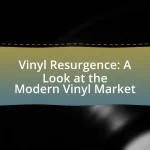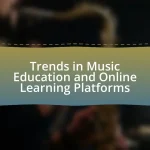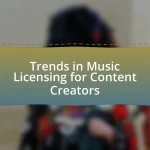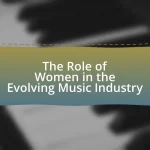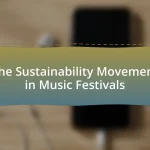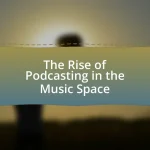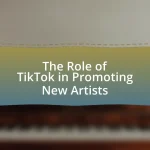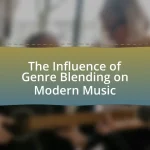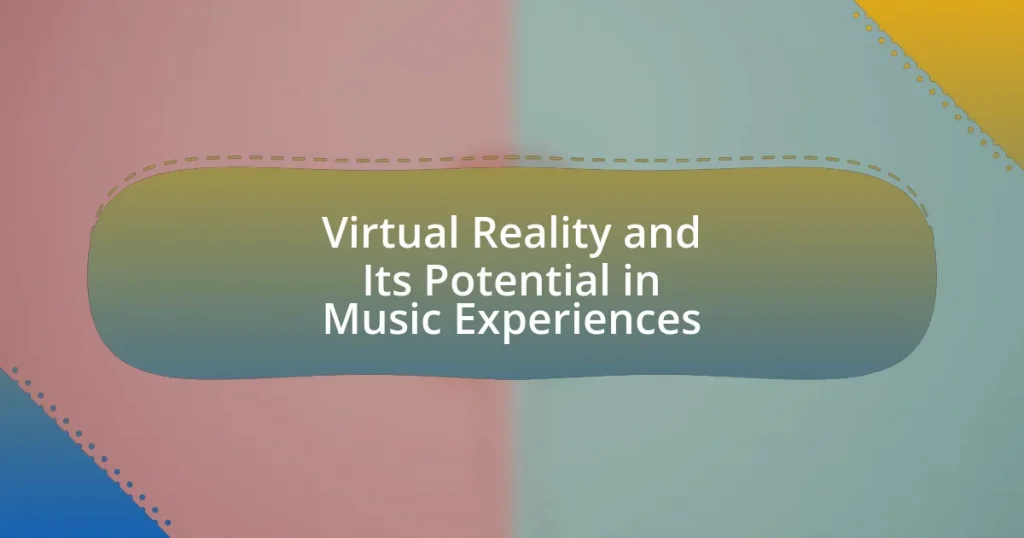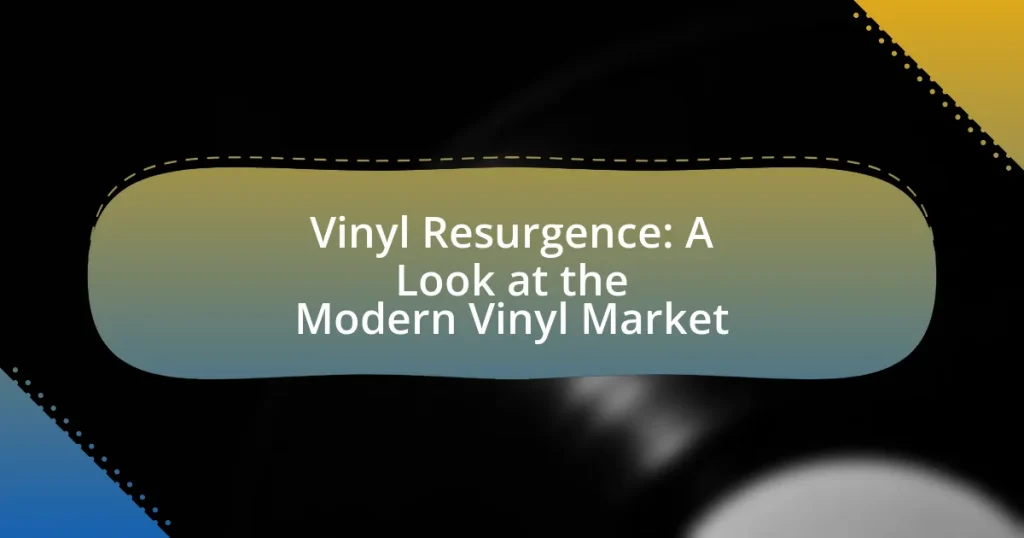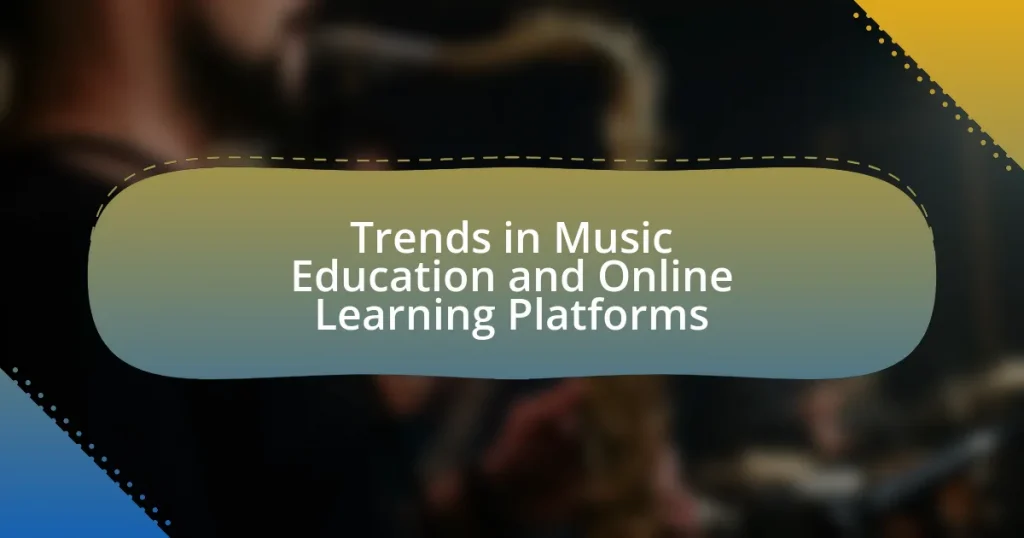TikTok serves as a pivotal platform for promoting new artists by leveraging its algorithm to provide viral exposure and audience engagement. The app enables emerging musicians to reach vast audiences without traditional marketing budgets, often resulting in significant increases in streaming numbers for songs featured in viral challenges. Key features such as user-generated content, challenges, and a recommendation system facilitate the discovery of new talent, while the platform’s dynamic environment fosters direct connections between artists and fans. This article explores how TikTok influences artist visibility, the advantages it offers over traditional promotion methods, and the strategies successful artists employ to navigate the platform effectively.

What is the Role of TikTok in Promoting New Artists?
TikTok plays a significant role in promoting new artists by providing a platform for viral exposure and audience engagement. The app’s algorithm favors content that resonates with users, allowing new artists to reach millions without traditional marketing budgets. For instance, songs that become popular on TikTok often see a surge in streaming numbers; a report from Billboard indicated that tracks featured in viral challenges can increase their chart performance significantly. Additionally, TikTok’s user-generated content encourages creativity, enabling artists to connect with fans directly and build a loyal following. This dynamic interaction fosters a community around new music, making TikTok a crucial tool for emerging artists in the music industry.
How does TikTok facilitate the discovery of new artists?
TikTok facilitates the discovery of new artists through its algorithm-driven content recommendation system, which promotes videos based on user engagement rather than follower count. This allows emerging artists to reach a wider audience quickly, as their content can go viral regardless of their existing popularity. For instance, the platform’s “For You Page” curates personalized feeds that showcase trending music and creative videos, enabling users to discover new sounds and talents organically. Additionally, TikTok’s features, such as challenges and duets, encourage user interaction with new artists, further amplifying their visibility. This dynamic environment has led to numerous artists gaining significant recognition, with statistics showing that songs trending on TikTok often see a substantial increase in streaming numbers on platforms like Spotify and Apple Music.
What features of TikTok contribute to artist promotion?
TikTok’s algorithm, user-generated content, and viral challenges significantly contribute to artist promotion. The algorithm prioritizes engaging content, allowing artists’ music to reach a wider audience through personalized feeds. User-generated content, such as dance challenges or lip-syncs, encourages users to create videos featuring an artist’s song, increasing exposure. Additionally, viral challenges often incorporate specific tracks, leading to a surge in streams and downloads. For instance, songs that become associated with popular challenges can see a 300% increase in streams, demonstrating TikTok’s effectiveness in promoting new artists.
How does the algorithm influence artist visibility?
The algorithm significantly influences artist visibility by determining which content is shown to users based on engagement metrics. TikTok’s algorithm prioritizes videos that receive high levels of interaction, such as likes, shares, and comments, thereby promoting artists whose content resonates with viewers. For instance, a study by the Pew Research Center found that 67% of TikTok users discover new music through the platform, highlighting the algorithm’s role in amplifying artists who create engaging content. This mechanism allows emerging artists to gain visibility rapidly, as their videos can go viral and reach a broader audience, regardless of their follower count.
Why is TikTok important for emerging musicians?
TikTok is important for emerging musicians because it provides a platform for viral exposure and audience engagement. The app’s algorithm favors creative content, allowing new artists to reach millions of users quickly, often leading to significant increases in streams and followers. For instance, songs that trend on TikTok can see a 1,000% increase in Spotify streams, as evidenced by the success of tracks like “Savage Love” by Jawsh 685 and Jason Derulo, which gained popularity through TikTok challenges. This demonstrates TikTok’s effectiveness in transforming unknown artists into mainstream sensations.
What advantages does TikTok offer over traditional music promotion methods?
TikTok offers several advantages over traditional music promotion methods, primarily through its algorithm-driven content discovery and user engagement features. The platform allows artists to reach a vast audience quickly, as its algorithm promotes videos based on user interaction rather than follower count, enabling even new artists to go viral. For instance, songs that trend on TikTok can gain millions of streams on music platforms like Spotify within days, as seen with tracks like “Savage Love” by Jawsh 685 and Jason Derulo, which gained popularity through TikTok challenges. Additionally, TikTok’s short-form video format encourages creative and engaging content, allowing artists to showcase their music in innovative ways that resonate with younger audiences. This contrasts with traditional methods, which often rely on radio play or lengthy promotional campaigns that may not yield immediate results.
How does TikTok impact the music industry landscape?
TikTok significantly impacts the music industry landscape by serving as a powerful platform for music discovery and promotion. The app’s algorithm promotes short, engaging clips that can lead to viral trends, allowing new artists to gain exposure rapidly. For instance, songs like “Savage” by Megan Thee Stallion and “Old Town Road” by Lil Nas X gained immense popularity after being featured in TikTok videos, leading to chart-topping success. Additionally, a report from the Recording Industry Association of America (RIAA) indicates that TikTok has become a key driver of music consumption, with over 70% of users discovering new music through the platform. This shift in how music is promoted and consumed illustrates TikTok’s transformative role in the music industry.
What types of content do new artists create on TikTok?
New artists on TikTok primarily create music performances, behind-the-scenes content, and engaging challenges. Music performances often include original songs or covers, allowing artists to showcase their talent and connect with audiences. Behind-the-scenes content provides insights into their creative process, helping to build a personal brand. Engaging challenges, such as dance or lip-sync trends, enable artists to participate in viral moments, increasing their visibility. These content types are effective in promoting new artists, as TikTok’s algorithm favors engaging and shareable content, leading to wider reach and audience growth.
How do challenges and trends help in promoting new music?
Challenges and trends significantly promote new music by creating viral moments that increase visibility and engagement. For instance, TikTok challenges often encourage users to create content using specific songs, leading to widespread exposure for those tracks. According to a report by the Recording Industry Association of America, songs that go viral on TikTok can see a substantial increase in streaming numbers, with some tracks gaining millions of streams within weeks of a challenge’s launch. This phenomenon illustrates how trends can drive user-generated content, effectively marketing new music to diverse audiences and enhancing its reach.
What role does user-generated content play in artist promotion?
User-generated content significantly enhances artist promotion by fostering authentic engagement and expanding reach. When fans create and share content related to an artist, such as dance challenges or cover songs, it generates organic buzz and visibility, often leading to viral trends. For instance, a study by the University of Southern California found that songs featured in user-generated videos on platforms like TikTok can experience a 1,000% increase in streams. This demonstrates that user-generated content not only amplifies an artist’s presence but also drives measurable growth in their audience and streaming numbers.

How do artists leverage TikTok for their careers?
Artists leverage TikTok for their careers by creating engaging short-form videos that showcase their music, personality, and creative process. This platform allows artists to reach a vast audience quickly, as viral trends can lead to significant exposure; for instance, songs featured in popular TikTok challenges often see a surge in streaming numbers. According to a report by the Recording Industry Association of America, TikTok has become a key driver of music discovery, with 67% of users stating they have discovered new artists through the app. By utilizing TikTok’s features, such as hashtags and duets, artists can interact with fans and other creators, further enhancing their visibility and engagement.
What strategies do successful artists use on TikTok?
Successful artists on TikTok utilize several key strategies to enhance their visibility and engagement. They create short, engaging videos that showcase their music, often incorporating trending sounds and challenges to reach a wider audience. For instance, artists like Lil Nas X gained significant traction by participating in viral challenges, which helped propel their songs to mainstream success. Additionally, successful artists engage with their audience through comments and live streams, fostering a sense of community and loyalty. Data shows that TikTok videos that encourage user interaction, such as duets or stitches, can lead to higher engagement rates, further amplifying an artist’s reach.
How can artists engage with their audience effectively?
Artists can engage with their audience effectively by utilizing interactive content and leveraging social media platforms like TikTok. By creating short, engaging videos that showcase their personality, creative process, or behind-the-scenes moments, artists can foster a sense of connection and community with their audience. TikTok’s algorithm promotes content that resonates with viewers, allowing artists to reach a wider audience and encourage user interaction through comments, shares, and challenges. Research indicates that 63% of TikTok users feel a stronger connection to brands and creators that engage with them directly, highlighting the platform’s effectiveness in building relationships.
What are the best practices for creating viral content?
The best practices for creating viral content include crafting engaging and relatable narratives, utilizing trending audio and hashtags, and encouraging audience interaction. Engaging narratives resonate with viewers, making them more likely to share the content; for instance, videos that tell a story or evoke emotions often perform better. Using trending audio and hashtags increases visibility, as TikTok’s algorithm favors content that aligns with current trends, leading to higher chances of virality. Encouraging audience interaction, such as asking viewers to comment or participate in challenges, fosters community engagement and boosts shareability. According to a study by the Digital Marketing Institute, content that prompts user interaction can increase engagement rates by up to 50%.
How do collaborations on TikTok benefit new artists?
Collaborations on TikTok benefit new artists by significantly increasing their visibility and reach to diverse audiences. When new artists collaborate with established creators, they tap into the latter’s follower base, which can lead to a rapid increase in their own followers and engagement. For instance, a study by the University of Southern California found that artists who collaborated on social media platforms experienced a 30% increase in audience engagement compared to those who did not. This exposure can lead to more opportunities, such as brand partnerships and live performances, ultimately enhancing their career prospects.
What types of collaborations are most effective?
Collaborations that leverage influencer partnerships, user-generated content, and cross-promotions are most effective in promoting new artists on TikTok. Influencer partnerships allow artists to tap into established audiences, enhancing visibility and engagement; for instance, artists who collaborate with popular TikTok creators often see a significant increase in their follower count and song streams. User-generated content encourages fans to create their own videos using the artist’s music, fostering a sense of community and organic promotion. Cross-promotions with brands or other artists can also amplify reach, as seen in campaigns where multiple creators share content that features a new artist, leading to higher engagement rates and broader audience exposure.
How can artists find potential collaborators on the platform?
Artists can find potential collaborators on TikTok by utilizing the platform’s features such as hashtags, duet functionality, and the “For You” page. By searching for relevant hashtags related to their genre or style, artists can discover other creators who share similar interests. The duet feature allows artists to create content alongside others, fostering collaboration opportunities. Additionally, the “For You” page curates content based on user interactions, helping artists connect with like-minded individuals. These methods are effective as they leverage TikTok’s algorithm and community engagement to facilitate collaboration among artists.
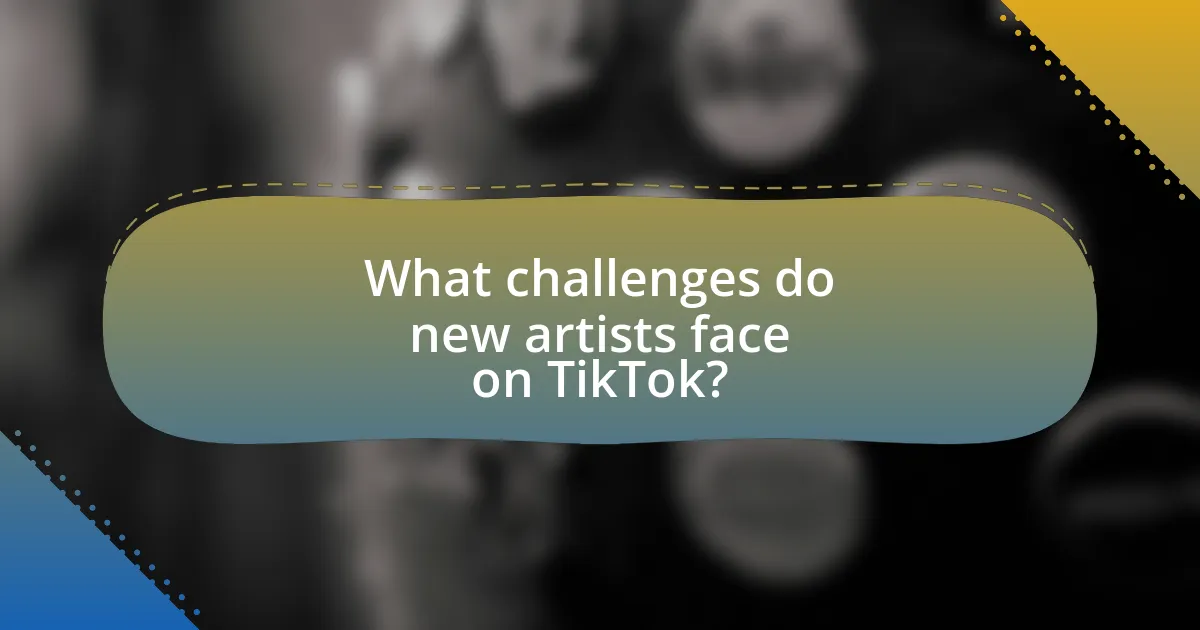
What challenges do new artists face on TikTok?
New artists face several challenges on TikTok, including algorithm visibility, content saturation, and audience engagement. The TikTok algorithm prioritizes established creators, making it difficult for newcomers to gain visibility despite high-quality content. Additionally, the platform is saturated with a vast number of creators, which increases competition and makes it harder for new artists to stand out. Furthermore, engaging an audience consistently can be challenging, as trends change rapidly and maintaining relevance requires constant adaptation. These factors collectively hinder new artists’ ability to build a following and promote their work effectively on the platform.
What are the common pitfalls for artists using TikTok?
Common pitfalls for artists using TikTok include inconsistent posting, lack of engagement with followers, and failure to understand the platform’s algorithm. Inconsistent posting can lead to decreased visibility, as TikTok favors active accounts that regularly share content. Lack of engagement with followers can result in a disconnect, reducing the likelihood of building a loyal fanbase. Additionally, artists often overlook the importance of the algorithm, which prioritizes content that resonates with viewers, leading to missed opportunities for virality. Understanding these pitfalls is crucial for artists aiming to effectively leverage TikTok for promotion.
How can artists avoid being overshadowed by trends?
Artists can avoid being overshadowed by trends by focusing on their unique voice and authentic expression. By cultivating a distinct style and narrative, artists can differentiate themselves from fleeting trends that dominate platforms like TikTok. Research indicates that authenticity resonates more with audiences; for instance, a study by the University of Southern California found that 70% of consumers prefer brands that are genuine and relatable. This suggests that artists who prioritize their individuality over conforming to trends are more likely to build a loyal following and sustain their relevance in the long term.
What strategies can mitigate negative feedback or backlash?
To mitigate negative feedback or backlash, artists can engage proactively with their audience, respond to criticism constructively, and maintain transparency in their creative processes. Proactive engagement involves regularly interacting with followers through comments and live sessions, which fosters a sense of community and loyalty. Constructive responses to criticism, rather than defensive reactions, can demonstrate maturity and willingness to improve, as seen in cases where artists publicly acknowledge feedback and adapt their content accordingly. Transparency about artistic choices and the creative process can also build trust, as audiences appreciate authenticity. For instance, artists who share behind-the-scenes content often receive more positive engagement, as it allows fans to connect with them on a personal level.
How does TikTok’s evolving nature affect artist promotion?
TikTok’s evolving nature significantly enhances artist promotion by providing a dynamic platform for viral content and audience engagement. As TikTok continuously updates its algorithm and features, artists can leverage trends, challenges, and user-generated content to reach wider audiences quickly. For instance, songs that become popular on TikTok often see a substantial increase in streaming numbers; a report from Billboard indicated that tracks trending on TikTok can experience a 300% increase in streams on platforms like Spotify. This rapid visibility allows emerging artists to gain traction and build a fanbase more effectively than traditional promotional methods.
What changes in TikTok’s features should artists be aware of?
Artists should be aware of TikTok’s recent updates, including enhanced analytics tools, expanded music licensing options, and new monetization features. Enhanced analytics tools provide artists with deeper insights into audience engagement and content performance, allowing for more strategic content creation. Expanded music licensing options enable artists to use a broader range of tracks in their videos, increasing creative possibilities. New monetization features, such as the TikTok Creator Fund and live gifting, offer artists additional revenue streams, supporting their growth on the platform. These changes reflect TikTok’s commitment to fostering a supportive environment for emerging artists.
How can artists adapt to shifts in user behavior on the platform?
Artists can adapt to shifts in user behavior on TikTok by analyzing engagement metrics and adjusting their content strategies accordingly. For instance, if data shows that users are increasingly favoring short, entertaining videos over longer formats, artists should focus on creating concise, visually engaging clips that capture attention quickly. Additionally, leveraging trending sounds and challenges can enhance visibility, as TikTok’s algorithm promotes content that aligns with current user interests. Research indicates that 63% of TikTok users discover new artists through the platform, highlighting the importance of staying attuned to evolving trends to maximize reach and engagement.
What practical tips can new artists implement on TikTok?
New artists can implement several practical tips on TikTok to enhance their visibility and engagement. First, they should create short, engaging videos that showcase their art process or finished pieces, as TikTok’s algorithm favors content that captures attention quickly. Additionally, artists should utilize trending sounds and hashtags relevant to their niche to increase discoverability; for instance, using popular music tracks can help their videos reach a broader audience. Collaborating with other creators can also amplify their reach, as partnerships often introduce artists to new followers. Regularly posting content, ideally at peak engagement times, can help maintain audience interest and grow their follower base. Lastly, engaging with followers through comments and live sessions fosters community and encourages loyalty, which is crucial for long-term success on the platform.
How can artists effectively use analytics to improve their content?
Artists can effectively use analytics by analyzing engagement metrics to tailor their content to audience preferences. By examining data such as likes, shares, comments, and watch time, artists can identify which types of content resonate most with their audience. For instance, TikTok provides insights into viewer demographics and behavior, allowing artists to adjust their themes, styles, and posting times accordingly. Research indicates that content aligned with audience interests can increase engagement rates by up to 50%, demonstrating the importance of data-driven decisions in content creation.
What are the key elements of a successful TikTok profile for artists?
A successful TikTok profile for artists includes a clear profile picture, an engaging bio, consistent content, and strategic use of hashtags. The profile picture should be recognizable and reflect the artist’s brand, while the bio must succinctly convey the artist’s identity and style, often including links to other platforms. Consistent content, such as regular posting of videos that showcase the artist’s work or personality, helps build an audience. Additionally, using relevant hashtags increases discoverability, allowing the artist to reach a broader audience. According to TikTok’s own guidelines, profiles that effectively utilize these elements tend to attract more followers and engagement, which is crucial for artists looking to promote their work.

